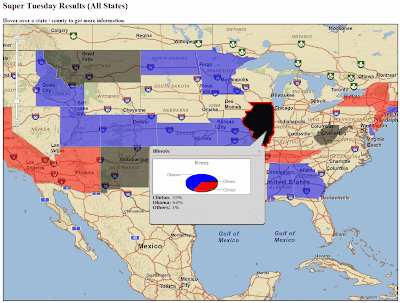
Opening Keynote
In greeting the attendees to ESRI's Federal User Conference (FedUC), ESRI President Jack Dangermond implored the audience to take a "new geographic approach," a theme he has emphasized over the past year. "Our world needs a new approach. We need to look at new ways to make the world work," he said. "Our carbon footprint is way over the line. [We need] to help make our communities more livable. And communicate more effectively, improve the way we live in our environment and mitigate conflicts." Dangermond believes that taking a geographic view of the world and the world's information is a holistic way to integrate a knowledge base. "In this first 40 years, GIS is starting to make a difference... GIS professionals working together can help this new approach."
ArcGIS Matures with Release of 9.3
ESRI representatives presented a list of enhancements for ArcGIS version 9.3 and noted in particular that this release has greatly improved documentation. Users can expect the release in April or May.
Some key enhancements include more refinement of iterative modeling and a new feature for a geographically weighted regression model. One demonstration included a foreclosure analysis - a hot topic in today's economic environment. An analyst explored where and why foreclosures occurred in 2007 using Department of Housing and Urban Development data. Spatial regression tools helped reveal the social and economic factors that led to the foreclosures. These tools can also be used to predict other areas at risk. The analysis revealed the combination of variables that significantly contributed to the foreclosures. For example, the debt ratio might be important in one geographic area, but unimportant in other geographic areas. Geographically weighted regression (GWR) creates focused equations that take into account the local parameters of the data. In the demonstration, GWR had an R2 value of 79.98% reliability, a number that represents a high correlation of factors. This index of the model's reliability provides a high confidence level, suggesting it's possible to predict areas that may be facing foreclosure, and perhaps address the problem before it is too late.
Other usability improvements in 9.3 include the following:
revamped management dialog box
new top menu location for Bookmark Manager
new Labeling function, including an option for "pausing" labels while the mouse button is depressed over the label to expose layers below the label
group layers and time series data (In the past, there were some challenges in turning on/off layers. A new keyboard shortcut allows the user to step through a time series using a menu pick.)
greater capability for graphic shapes, with a new option to attach information to a redlined shape without creating a shapefile (Graphics may be converted to the shapefile format with features in a separate function.)
match a legend feature color scheme with that shown on the map (The example given was a color ramp which could be altered in the map view by increasing the transparency, but the change was not always reflected in the legend. The new feature matches the legend with the map view more closely.)
advanced sorting option, in table views, to choose multiple fields and sort across those columns
field aliases, which allow the user to toggle between the internal database fields and the more useful aliases (With 9.3, aliases are persistent even after Joins.)
Joins - a new property set shows how the joins were created
Identify dialog box, creates a shortcut to the attribute table
symbology changes, including the ability to click on any feature on the map and get to the symbology in a pop-up dialog box
Disperse Markers that allow the user to change the cartographic representation of features on the map but not the underlying geographic reference
Send Crash Report (Huge applause erupted from the audience when the "Send Crash Report" dialog box popped up after John Calkins intentionally crashed the program. The feature sends bug reports directly to ESRI.)
ArcGIS Server Platform
ArcGIS Server 9.3 enhancements include the following on the Server and User Tiers:
Server Tier
better integrated and improved imagery management (Image server had been a separate service in 9.2. The approach now is to take imagery and plug it into the server and then serve it out to an application. Image processing steps are done on the server. The idea is to acquire raw imagery in a block and serve it out on demand. Image Service is a very fast raw imagery service that supports multispectral imagery. ArcGIS Server becomes an image service to image processing clients like ITT's ENVI.)
support for Role based user security
interoperability standards maintained
geodatabase enhancements, including support for DB2 and replication
mobile applications (A complete application is available to download to a mobile device that is supported by a location server.)
User Tier
frequent release of new versions of ArcGIS Explorer (The free product will provide access to a variety of Web services and consume more of what others have published. See Explorer Resource Center in the ArcGIS Explorer browser window. A new "swipe" feature allows the user to expose an underlying window of data by "pulling" a screen back and forth or up and down within the window.)
other miscellaneous enhancements:
ArcGIS Online includes a library of 2D and 3D Web services for free and for a fee and will in the future include specific GIS Service.
ArcGIS Server now supports Data Appliances for a secure Web environment.
The version 9.3 mashup capability speaks REST, supports the REST API and lightweight programming models as well as JavaScript applications.
ESRI clearly placed a lot of emphasis on working with Microsoft and Google, to the extent that ESRI users who adopt those platforms will be better able to integrate data derived from ArcGIS. ESRI reps noted that standards are well supported in 9.3, allowing users to author and serve applications for better interoperability. ESRI reps also alluded to version 9.4, which will support a full 3D environment space with analytical tools like viewsheds in 3D.

